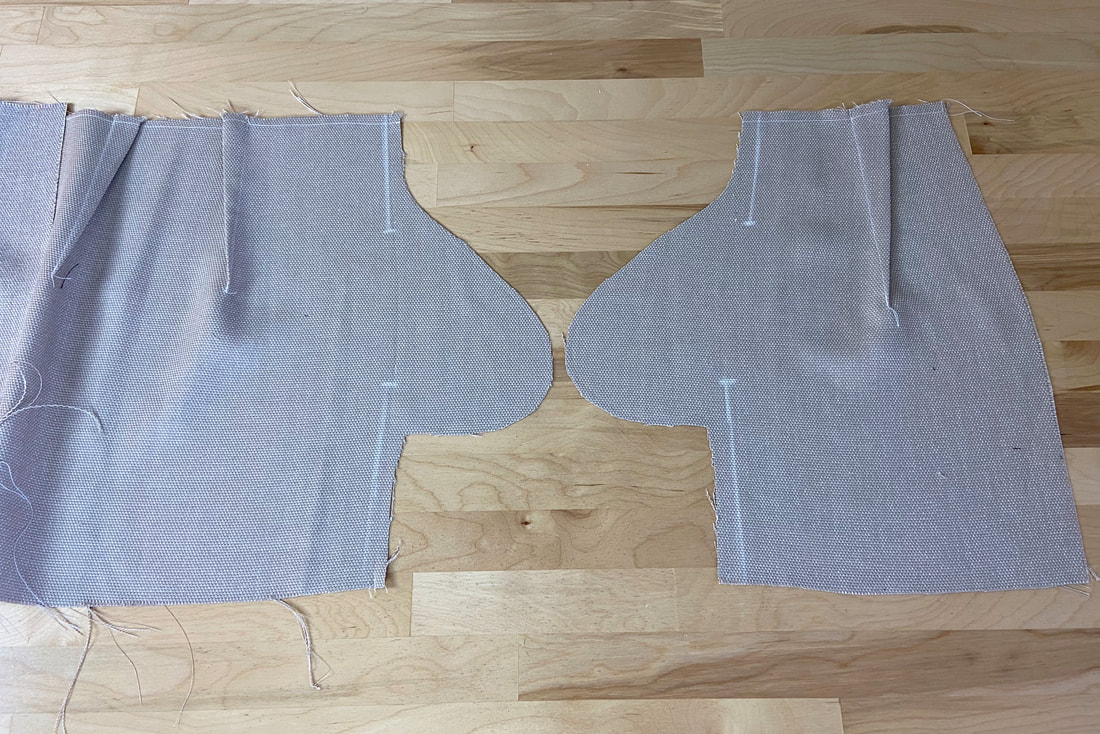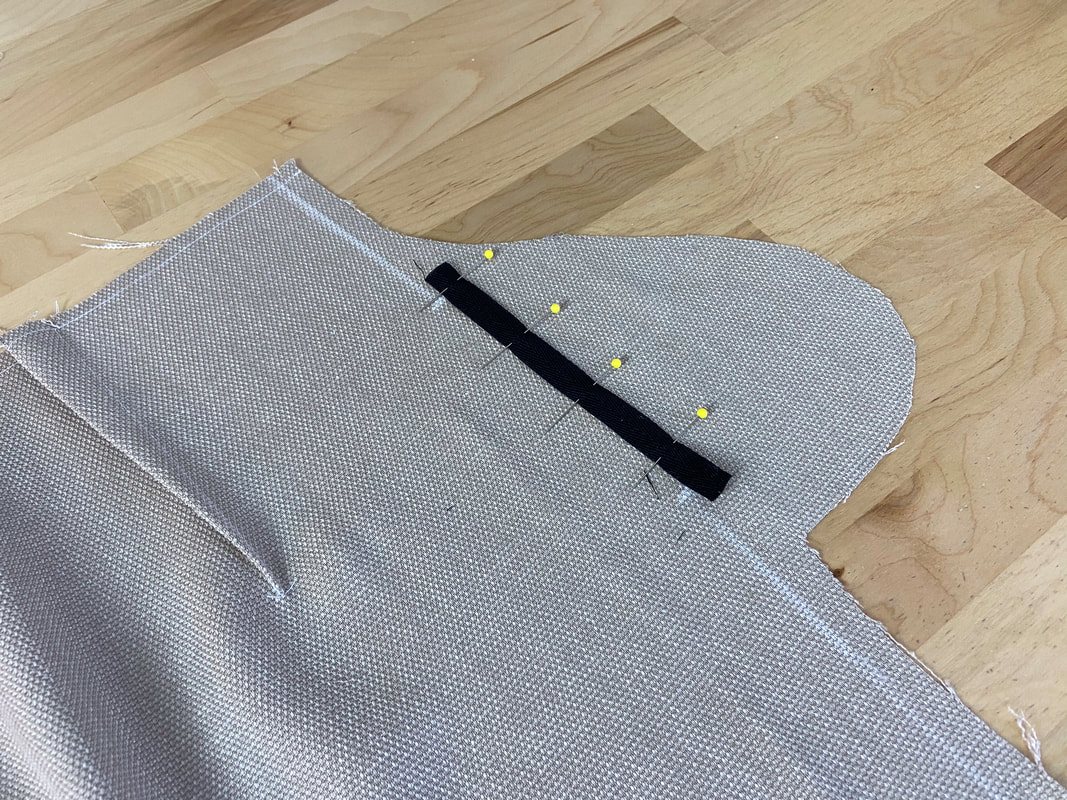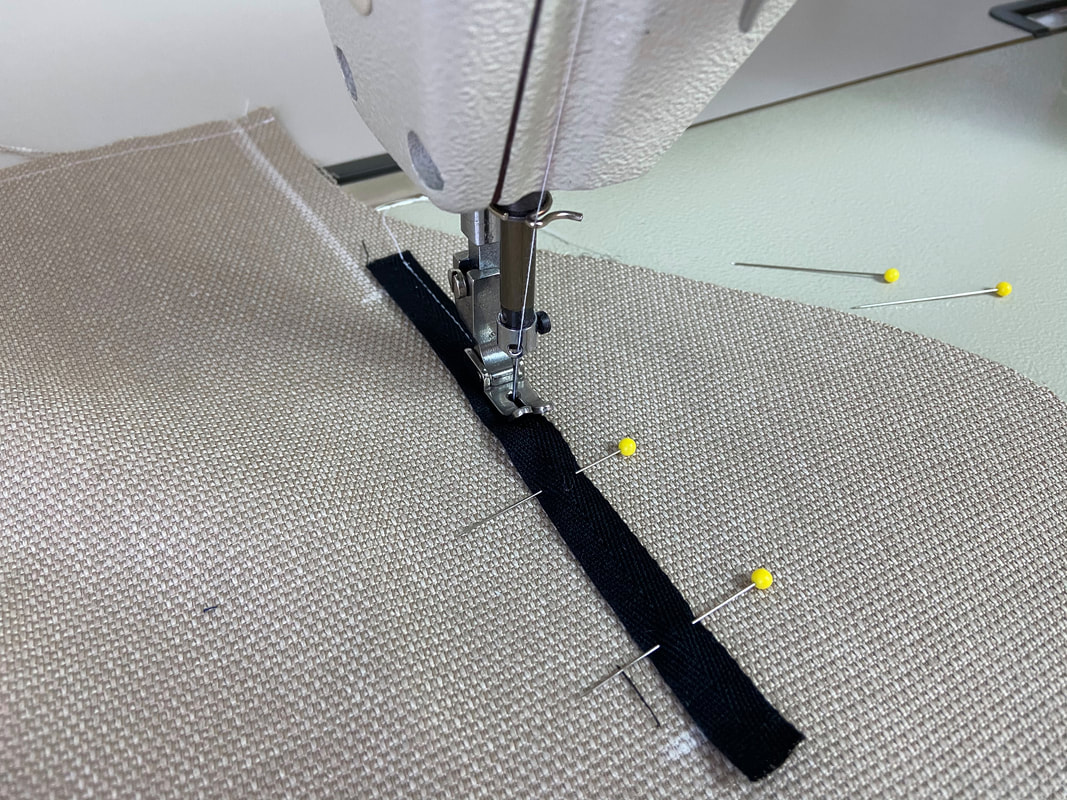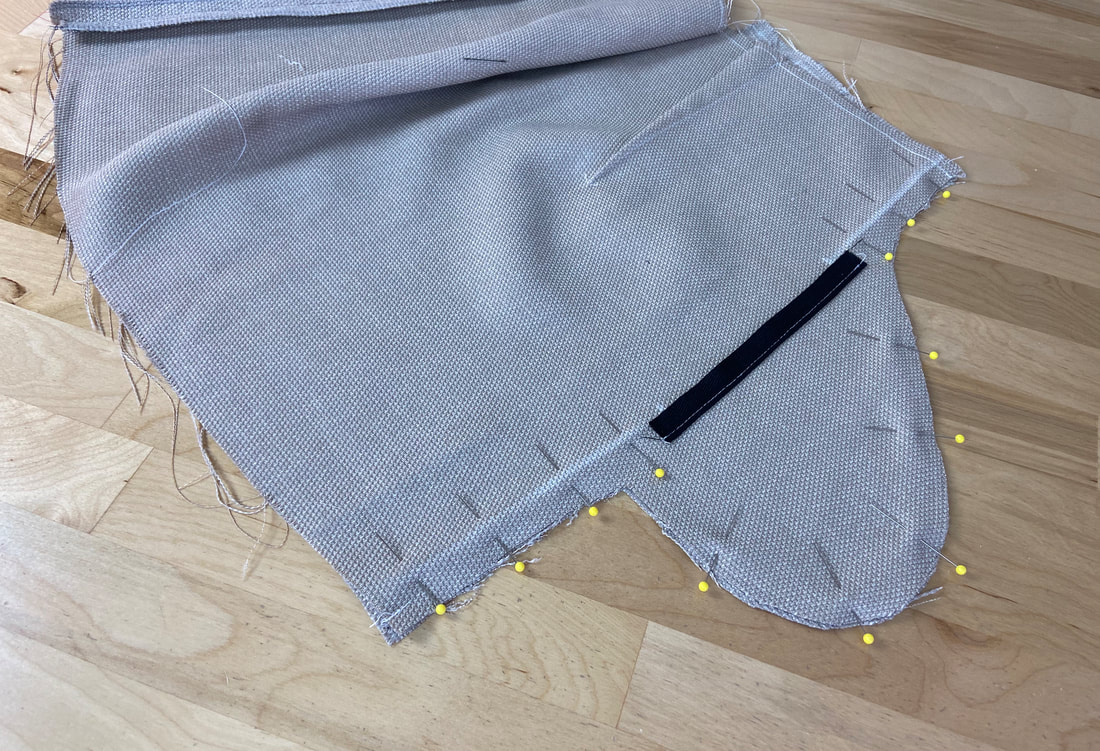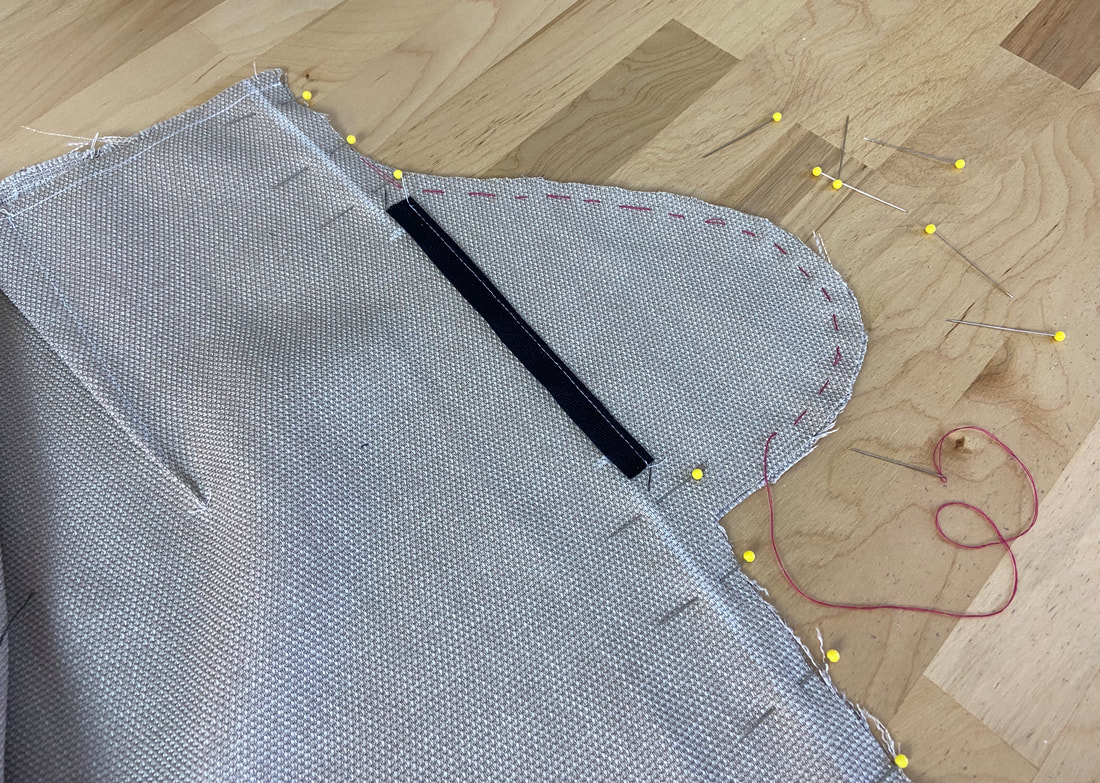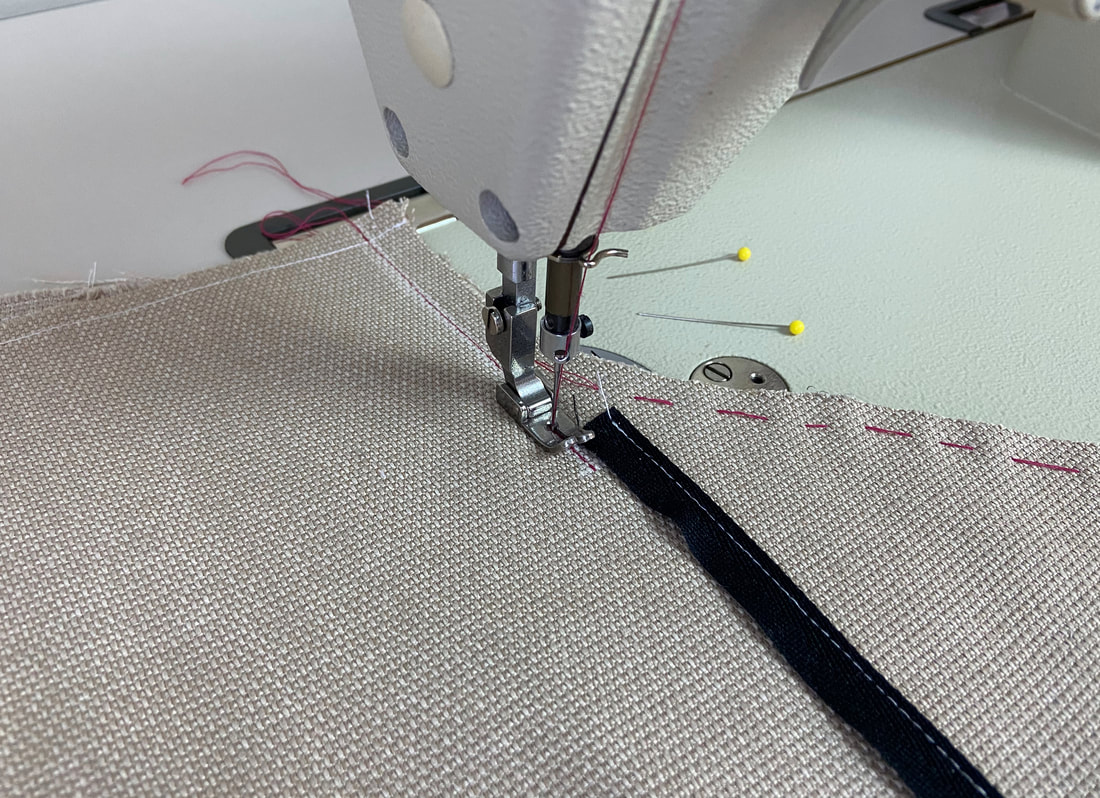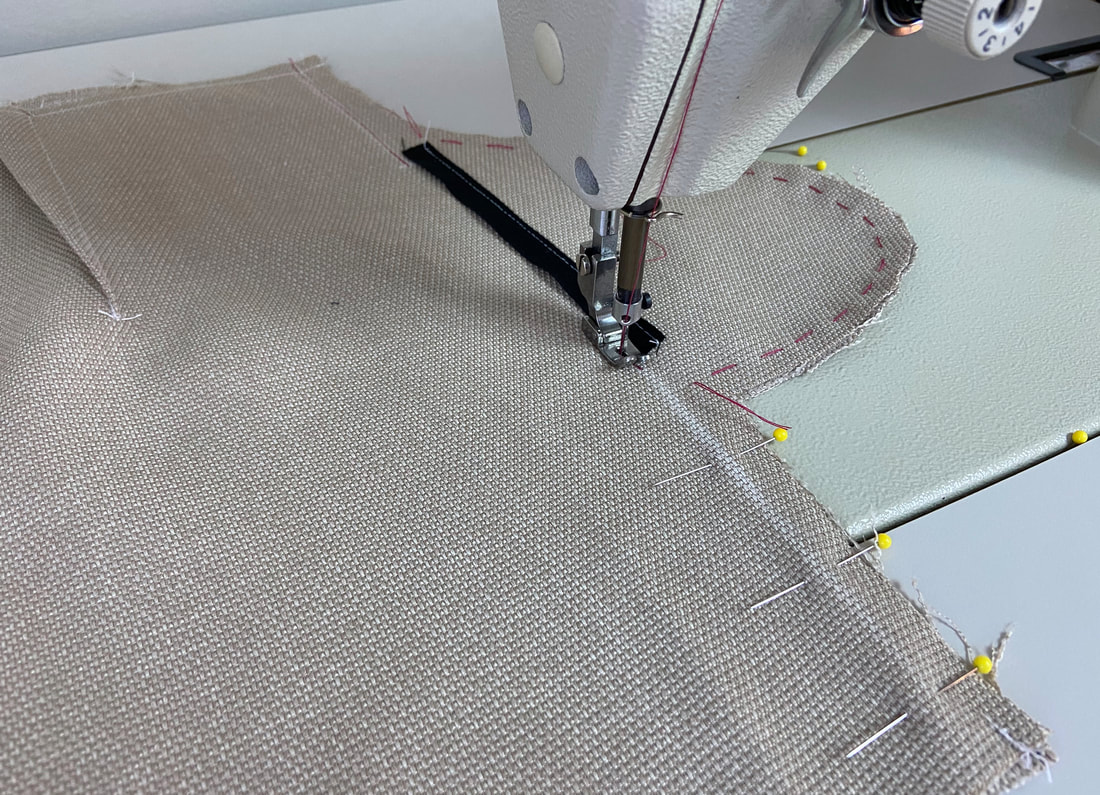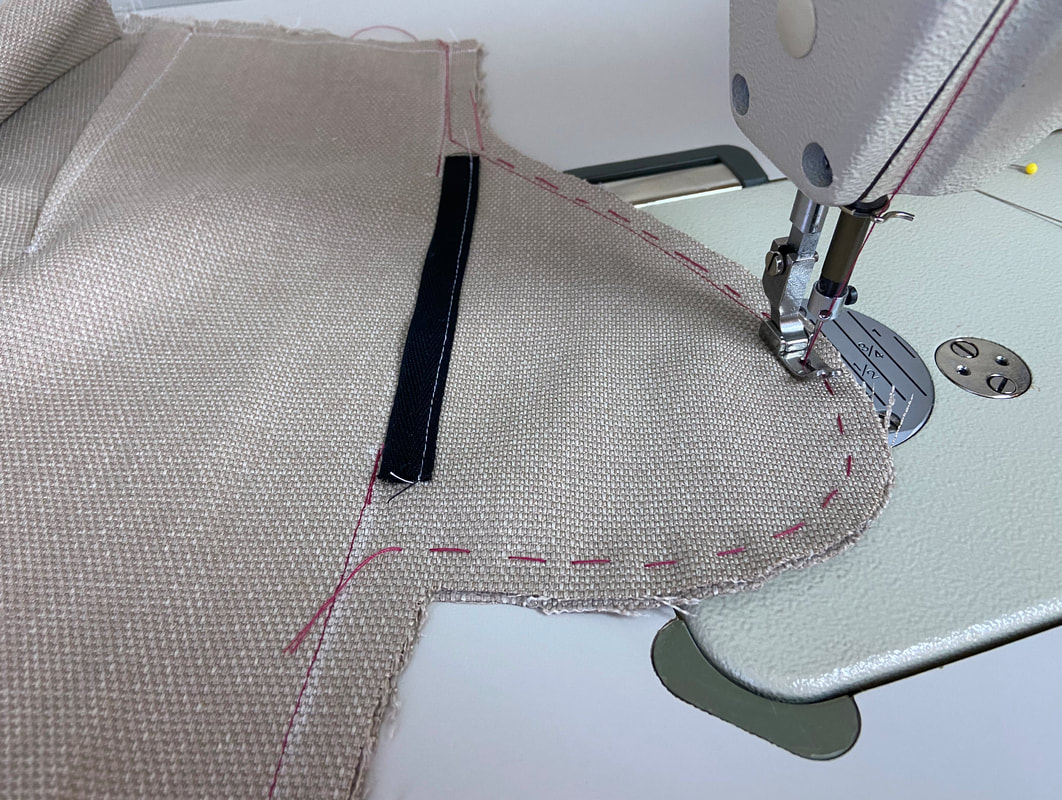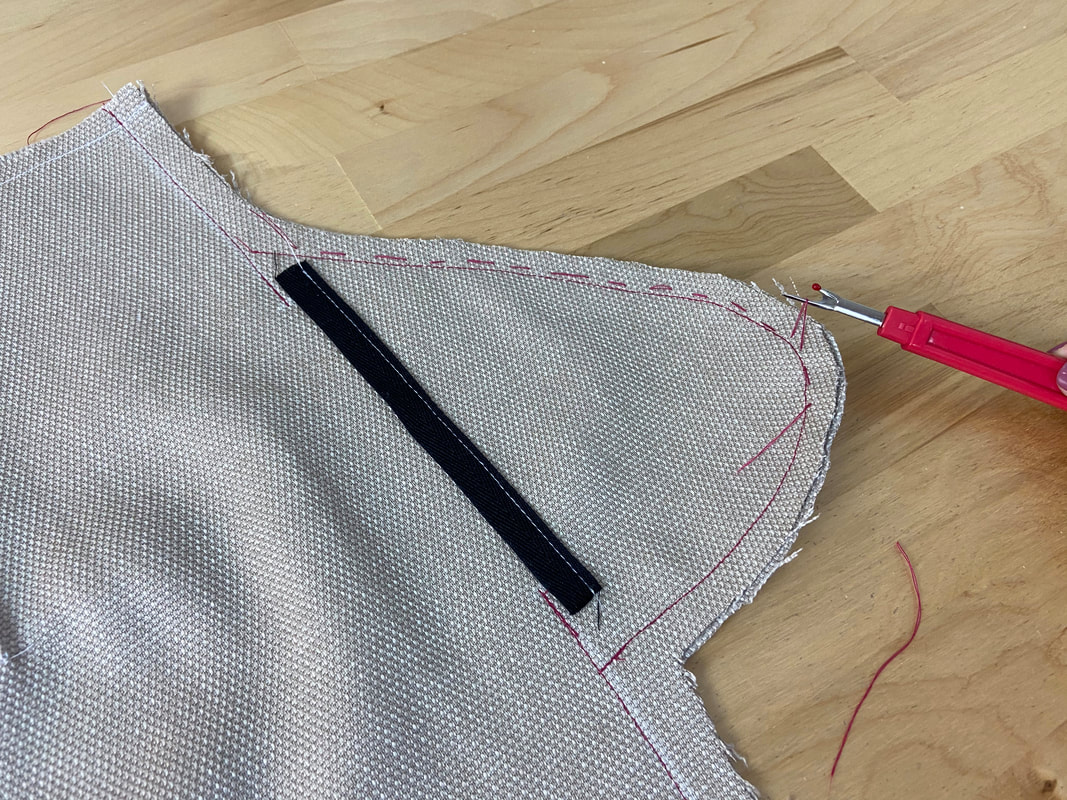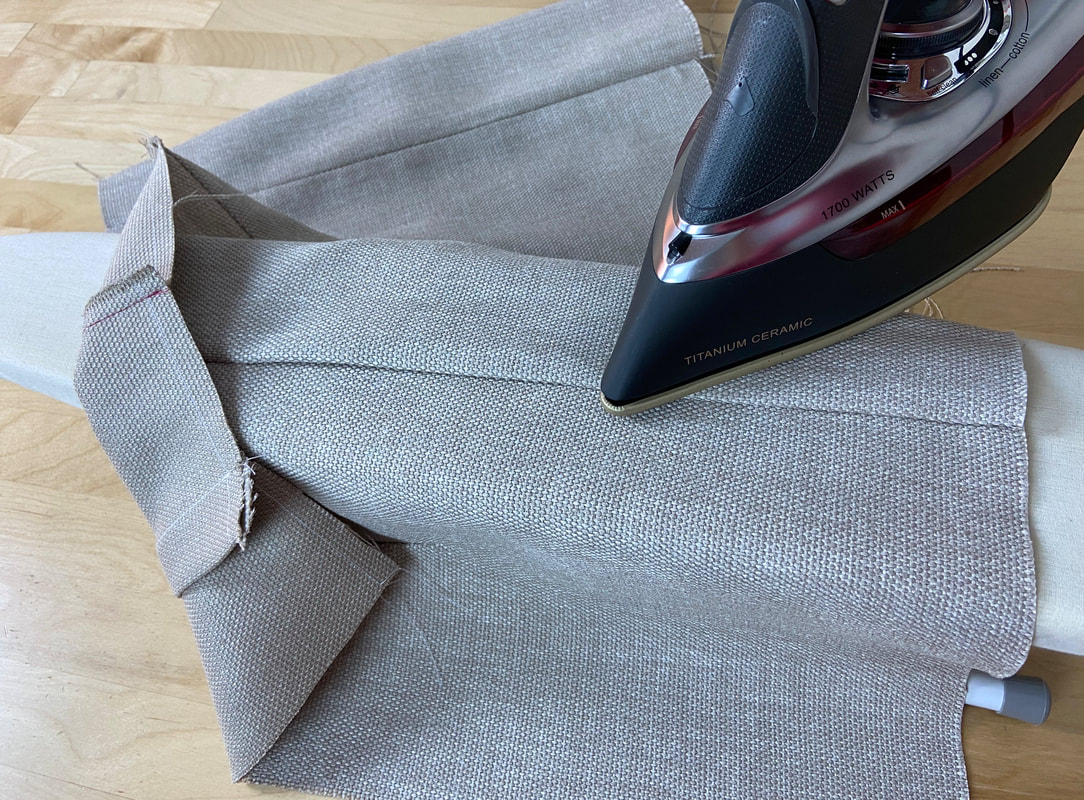Mini Tutorial: How To Sew An extension On-Seam Pocket
An extension on-seam pocket is constructed from two pocket pieces that are built into the garment portions comprising the seam (housing the pocket). Each front and back garment portion includes the front and respectively, back pocket extension. This means that instead of being cut separately, the pocket bag portions are included in the garment sewing patterns.
To sew an extension on-seam pocket, start by cutting out the garment pieces and transferring all sewing marks from your patterns onto the fabric's wrong side.
When it comes to an extension pocket style, it helps to transfer the seamlines and pocket opening lines on each seam edge as shown above- this will provide an important guide in the stitching process to follow.
To sew an extension on-seam pocket, start by cutting out the garment pieces and transferring all sewing marks from your patterns onto the fabric's wrong side.
When it comes to an extension pocket style, it helps to transfer the seamlines and pocket opening lines on each seam edge as shown above- this will provide an important guide in the stitching process to follow.
1. Since extension on-seam pockets have a weaker opening than the conventional on-seam application (which uses separate pocket pieces), it is important to reinforce the pocket's front edge. This area will incur most of the wear and pressure during use.
To do so, cut a piece of twill tape that is 1"-2" longer than the pocket opening, and align it to the wrong side of the front pocket bag. Place the body of the twill tape within the pocket bag aligning its edge with the pocket opening line. Insert pins perpendicularly to secure the tape edges.
To do so, cut a piece of twill tape that is 1"-2" longer than the pocket opening, and align it to the wrong side of the front pocket bag. Place the body of the twill tape within the pocket bag aligning its edge with the pocket opening line. Insert pins perpendicularly to secure the tape edges.
2. Topstitch the twill tape along one of its edges. In this tutorial, the tape is topstitched on the edge corresponding to the pocket bag.
3. Align the garment seam edges such that the front and back pocket extensions overlap and their edges match up perfectly. This process will naturally align the rest of seam at both top and bottom. Insert pins perpendicularly through both the seam and pocket bag edges as shown.
4. For extra stability, it helps to hand baste the pocket bag's curved edges to prevent them from shifting out of place in the machine stitching process. Doing so is especially helpful if you are a sewing beginner and not fully comfortable stitching evenly along curved edges.
5. Starting at the top of the seam, stitch the edges together at your designated seam allowance (1/2" in this case) until you arrive at the top pocket opening mark. Backstitch at this location to reinforce the pocket opening corner.
6. Starting at the bottom pocket opening mark, backstitch then stitch down until you arrive at the bottom of the seam.
7. Next, stitch the pocket bag starting at the top, within the seam allowance, and ending at the bottom, also within the seam allowance.
Once the pocket bag is fully stitched, remove the hand basting with a seam ripper.
8. Apply a finishing stitch such as serging or zigzag along the top and bottom portion of the seam and along the curved pocket bag extension.
9. Last but not least, iron the seam with the seam allowance layers and the pocket bag directed toward the garment's front side. It is easiest, in this instance, to iron from the seam's face side (as pictured).

